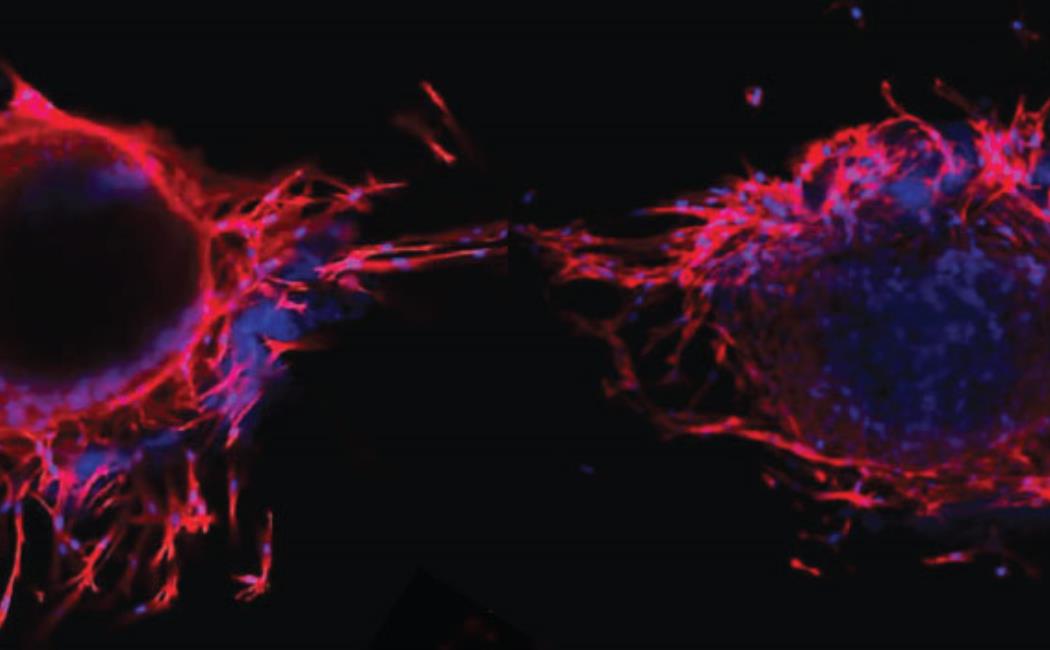
Skeletal scaffold supports bone cells and blood vessels
17 June, 2021
Tissue-engineering scaffolds built around ultrashort peptides provide a new platform for studying bone regeneration in the lab.
The peptides developed at KAUST self-assemble into a cartilage-like hydrogel that mimics the natural matrix that underpins bone formation in the body. Its physiologically relevant properties enable this cell-friendly biomaterial to support the growth and development of bone marrow precursor cells. It also enables tubular blood vessels to take shape, which is a critical part of bone health and repair.
“Our system is a simple, efficient and robust model that closely resembles the complex architecture of native bone tissue,” says Ph.D. student Salwa Alshehri. “Using these peptide-based hydrogels, we can now build 3D disease models for tissue engineering, biomedical research and drug testing.”
Click here to read the full story.
Image: A team of KAUST scientists has developed peptide-based hydrogels that mimic the natural matrix that underpins bone formation in the body.
© 2021 Alshehri et al.